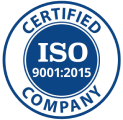Change in Authorised Share Capital Service
Starting from ₹2,000 + GST




Table Of Content
FAQs
What is authorised share capital?
Authorised share capital is the maximum amount of capital a company is legally permitted to issue to its shareholders, as specified in the company’s Memorandum of Association (MoA). It sets the upper limit on the total shares a company can issue.
What does changing authorised share capital mean?
Changing authorised share capital refers to increasing or reducing the maximum number of shares a company can issue. This modification is governed by the Companies Act, 2013, and requires shareholder approval, board resolutions, and filing with the RoC.
Why would a company increase its authorised share capital?
A company may choose to increase its authorised share capital to raise funds for expansion, attract new investors, or support strategic initiatives like mergers or acquisitions.
What form is required for changing authorised capital?
To change authorised share capital, the company must file Form SH-7 with the RoC. This form includes details of the changes and the resolution passed by shareholders.
What happens if Form SH-7 is not filed on time?
Failure to file Form SH-7 within the 30-day deadline may result in penalties under the Companies Act, 2013.
Can a company decrease its authorised share capital?
Yes, a company can reduce its authorised share capital if it no longer requires the ability to issue a large number of shares. This is done by passing a special resolution and complying with the relevant provisions of the Companies Act, 2013. However, the process is less common compared to increasing authorised capital.
Does altering authorised share capital require any government approvals?
Altering authorised share capital does not require direct government approval but must be registered with the Registrar of Companies (RoC). The company must submit Form SH-7 along with supporting documents to the RoC, which updates the company’s legal records.
Can the authorised share capital be changed multiple times?
Yes, a company can alter its authorised share capital multiple times as long as it follows the procedures outlined in its Articles of Association and the Companies Act, 2013, including board and shareholder approvals.
What are the consequences of not updating the authorised share capital in the MoA and AoA?
If the company fails to update its MoA and AoA to reflect the new authorised share capital, it may face legal and operational issues, including penalties for non-compliance. The company would also be unable to issue shares beyond the previously registered authorised capital.
Does the change in authorised share capital affect a company’s paid-up capital?
No, changing the authorised share capital does not directly affect the company’s paid-up capital. Paid-up capital represents the amount shareholders have paid for the shares issued. The authorised share capital sets the upper limit, but the company will still need to issue shares to reach the paid-up capital.
